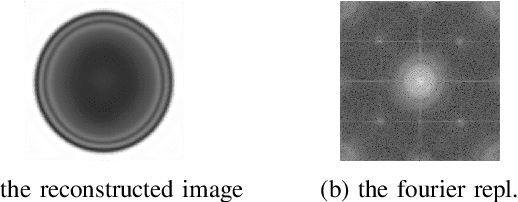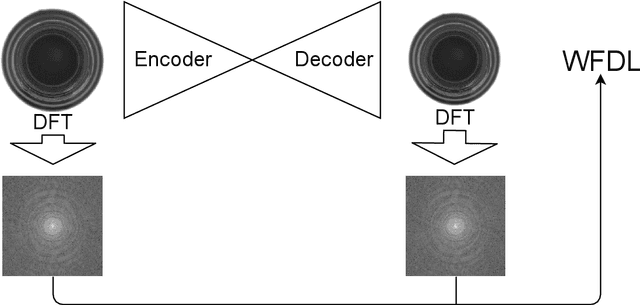Hideo Terada
Anomaly Detection By Autoencoder Based On Weighted Frequency Domain Loss
May 21, 2021



Abstract:In image anomaly detection, Autoencoders are the popular methods that reconstruct the input image that might contain anomalies and output a clean image with no abnormalities. These Autoencoder-based methods usually calculate the anomaly score from the reconstruction error, the difference between the input image and the reconstructed image. On the other hand, the accuracy of the reconstruction is insufficient in many of these methods, so it leads to degraded accuracy of anomaly detection. To improve the accuracy of the reconstruction, we consider defining loss function in the frequency domain. In general, we know that natural images contain many low-frequency components and few high-frequency components. Hence, to improve the accuracy of the reconstruction of high-frequency components, we introduce a new loss function named weighted frequency domain loss(WFDL). WFDL provides a sharper reconstructed image, which contributes to improving the accuracy of anomaly detection. In this paper, we show our method's superiority over the conventional Autoencoder methods by comparing it with AUROC on the MVTec AD dataset.
B-DCGAN:Evaluation of Binarized DCGAN for FPGA
Mar 29, 2018



Abstract:We are trying to implement deep neural networks in the edge computing environment for real-world applications such as the IoT(Internet of Things), the FinTech etc., for the purpose of utilizing the significant achievement of Deep Learning in recent years. Especially, we now focus algorithm implementation on FPGA, because FPGA is one of the promising devices for low-cost and low-power implementation of the edge computer. In this work, we introduce Binary-DCGAN(B-DCGAN) - Deep Convolutional GAN model with binary weights and activations, and with using integer-valued operations in forward pass(train-time and run-time). And we show how to implement B-DCGAN on FPGA(Xilinx Zynq). Using the B-DCGAN, we do feasibility study of FPGA's characteristic and performance for Deep Learning. Because the binarization and using integer-valued operation reduce the memory capacity and the number of the circuit gates, it is very effective for FPGA implementation. On the other hand, the quality of generated data from the model will be decreased by these reductions. So we investigate the influence of these reductions.
 Add to Chrome
Add to Chrome Add to Firefox
Add to Firefox Add to Edge
Add to Edge